

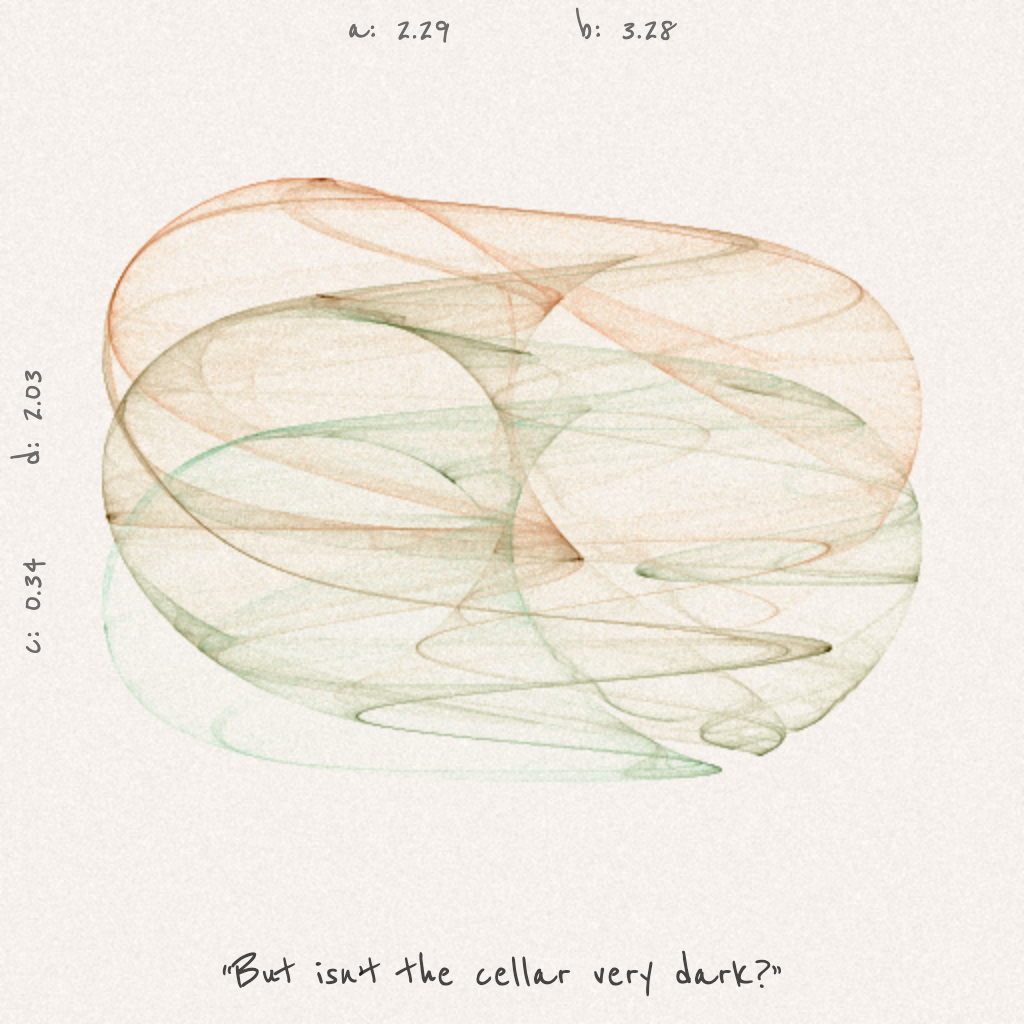
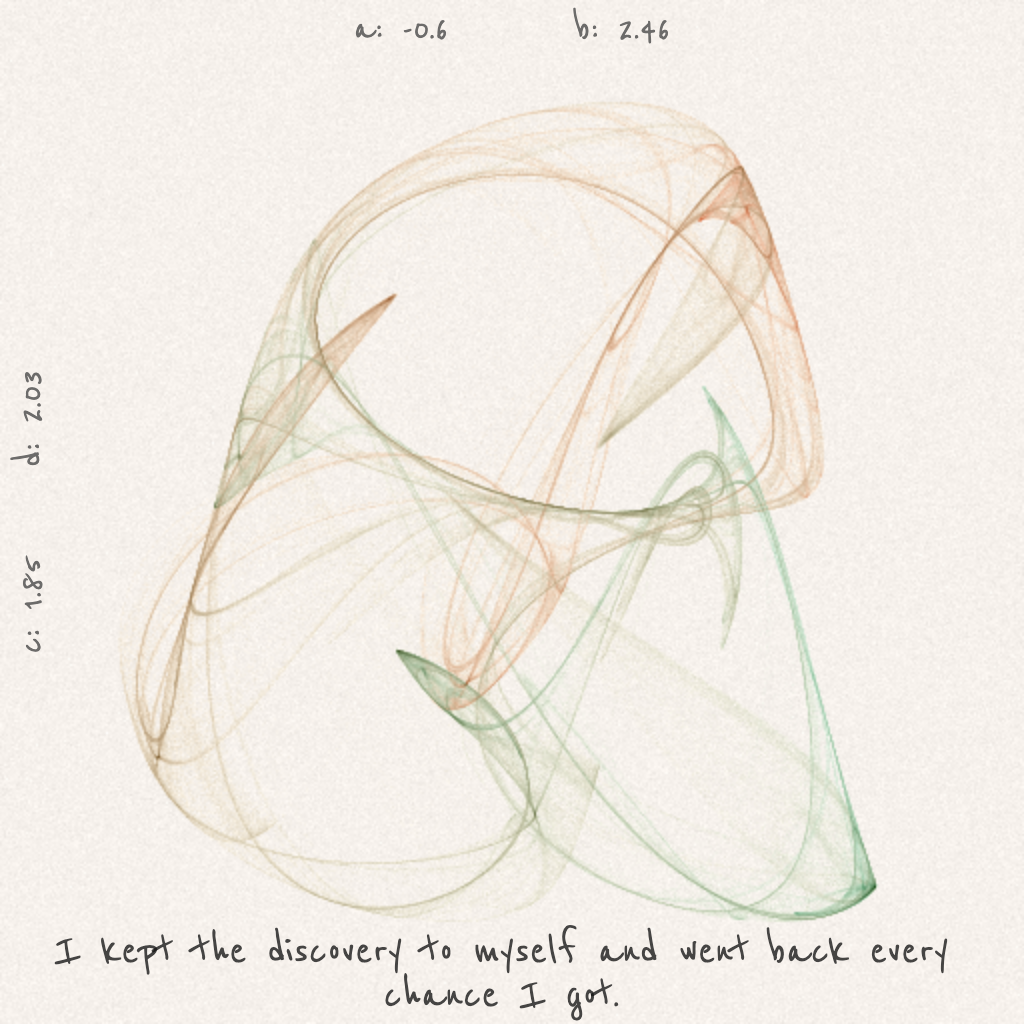





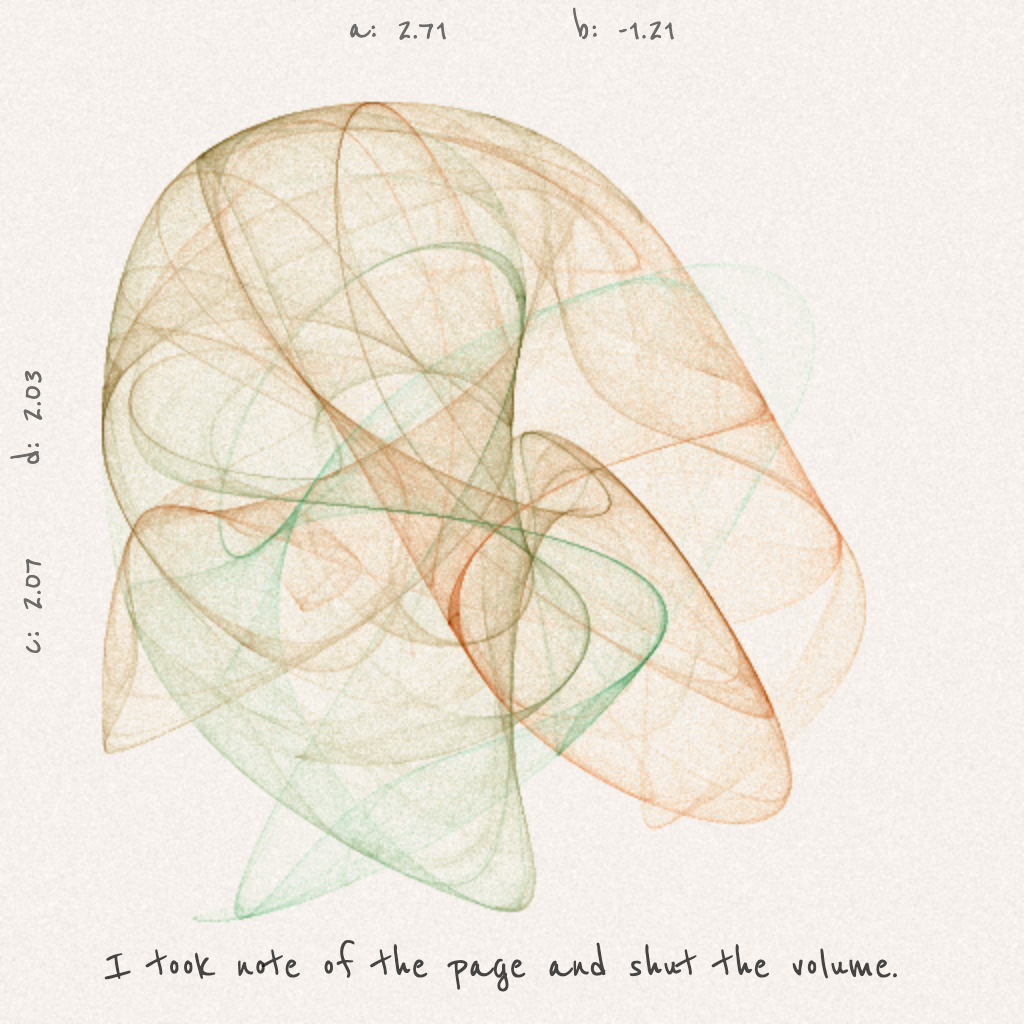

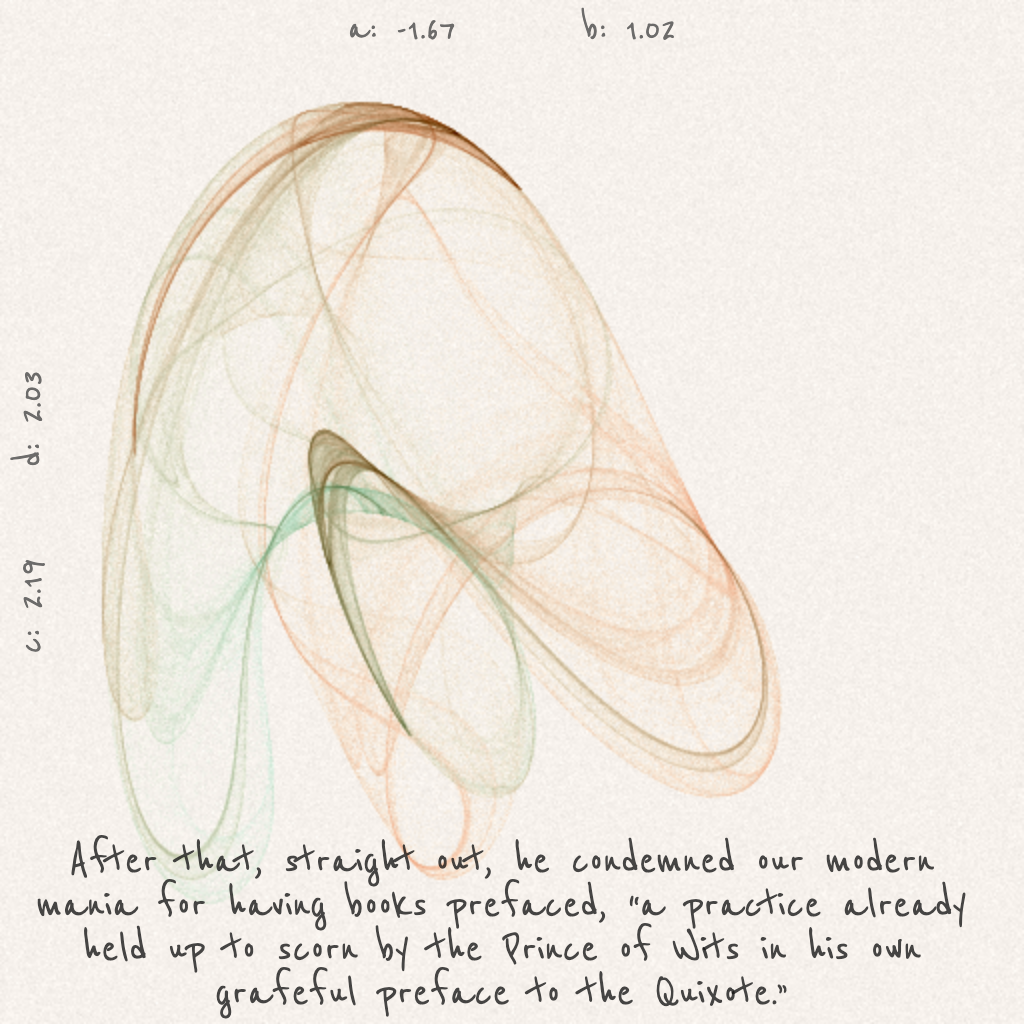
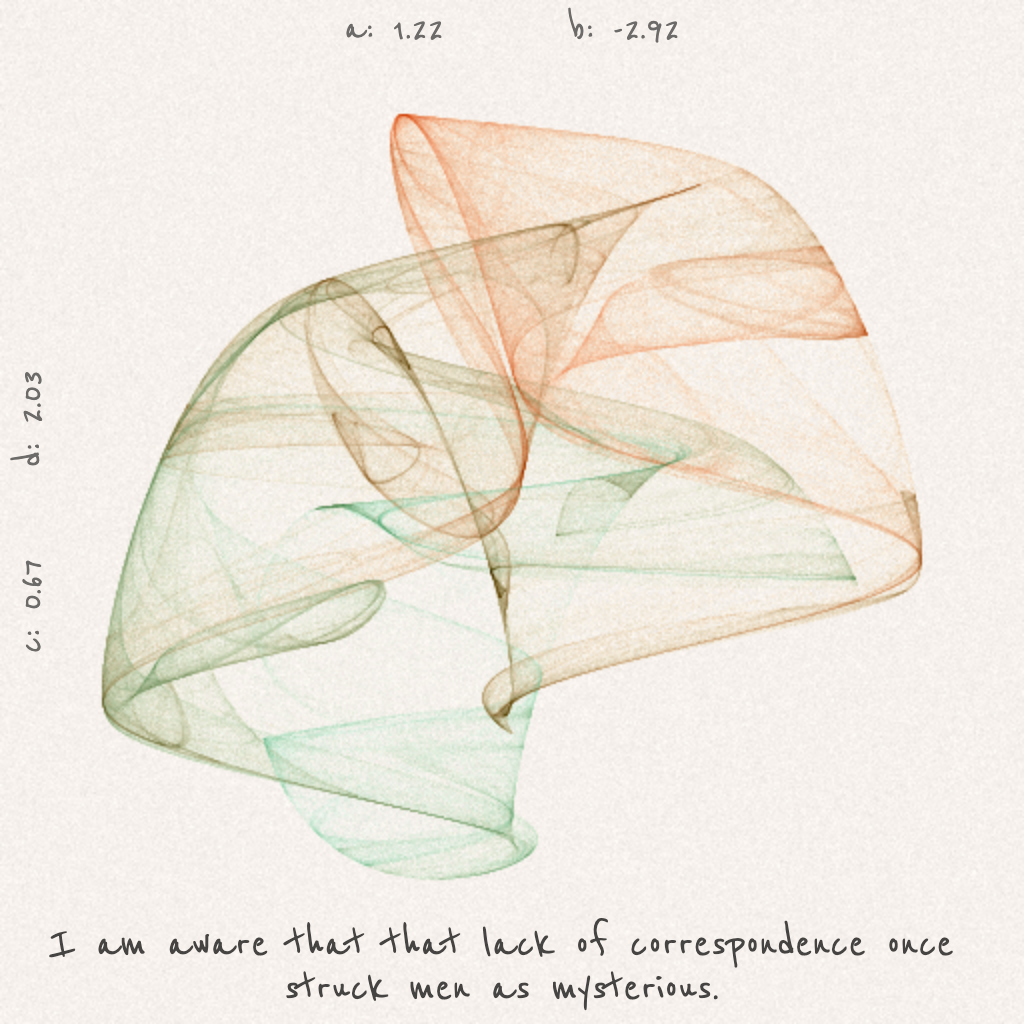



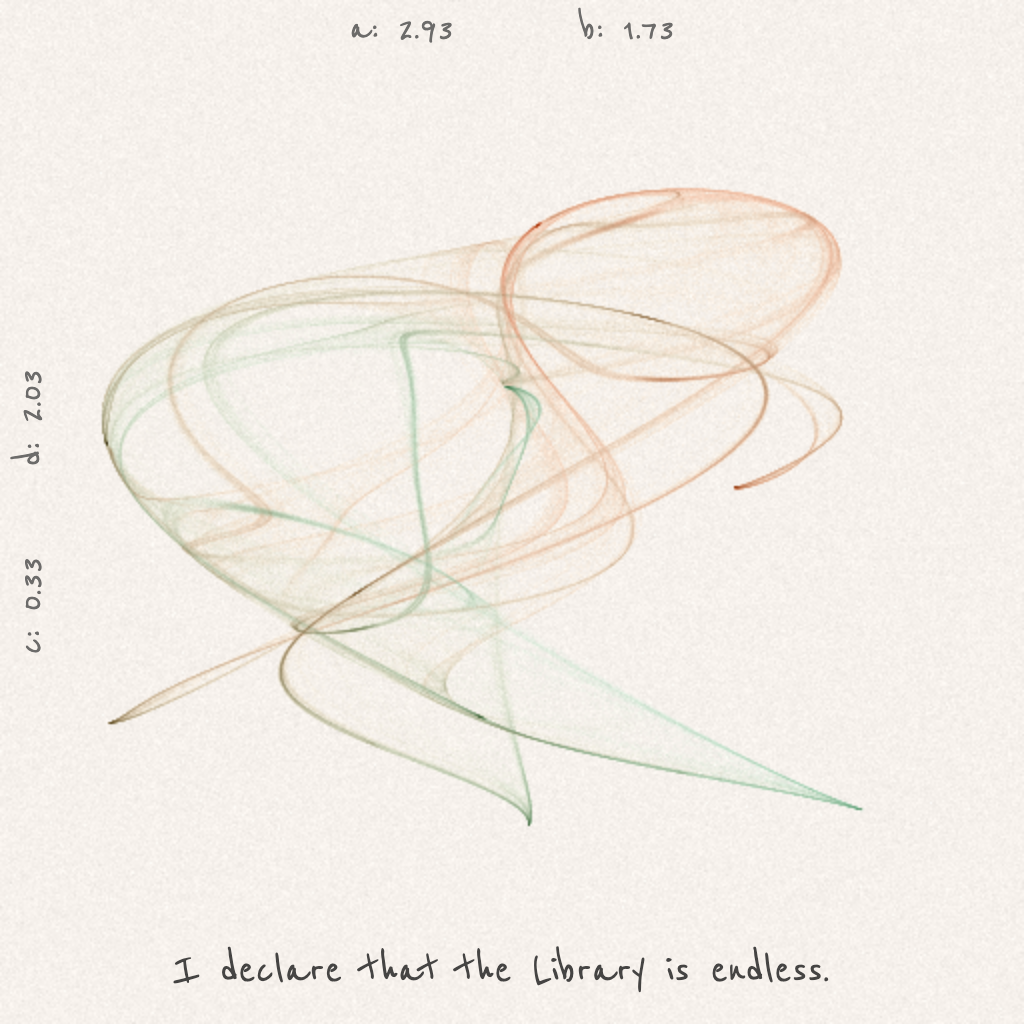
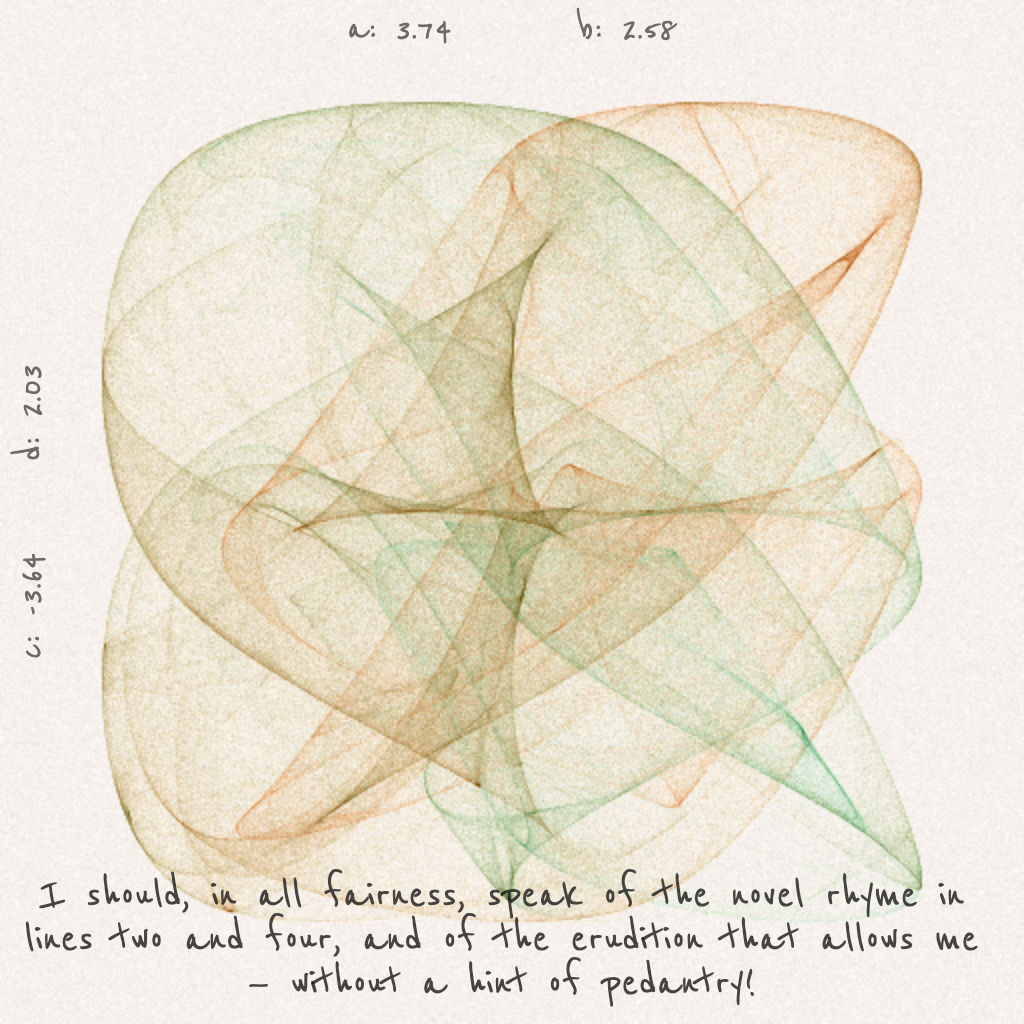
-> To the work’s website.
-> Oct. 2021-> Keywords: Mathematics, Installation, Computational Art
-> Documentation
Aleph-one is an installation containing two parts: a real-time computer programme runs on a CPU and a monitor, and printings on paper.
The digital part of the installation is a custom software that generates real-time animation, in which the parameters of the attractor system change over time. Non-repetitive geometries will be rendered on the screen endlessly.
The printings are images rendered by the dynamic system under different initial conditions. This series of images are produced by calculating the accumulated number of points at each pixel’s position in the system. An additional function is applied to fetch one sentence from Borges’s fiction randomly, and print it at the bottom of the image.
From ancient Greek period to modern mathematics, enumeration played an irreplicable role in in the study of infinity. These printings, arranged in a specific and structured order, can be seen as static portraits of the “infinity entity”, or enumerations of the “potential infinity” in an abstract way. For each of the rendered image, the parameters of the attractors are also printed at the edges.
The program is coded in JavaScript, with P5.js and RiTa.js library.

INSPIRATION
One key point in the transition from the Greek mathematicians to Cantor is to consider infinity as “another number”, and to acknowledge that there are different infinities. With Cantor’s theory about the infinity sets, people started to study the concept of actual infinity like any other mathematical concept, instead of thinking about it as a potential state of numbers that human minds can never achieve. The idea of “infinity as a set of numbers” is essential in the mathematical framework of infinity.
As mentioned above, in Borges’s fictions The Book of Sand, The Library of Babel, and The Aleph, the idea of infinity as a whole, an entity, or a universe, exist again and again. This is what I found matches with an attractor system closely. While a strange attractor itself is a blob of initial conditions, or in Cantor’s theory, a continuum, the geometry it creates contains an infinite complex of surfaces. Not only that, the infinity also lies in every single surface created by the system: we can, as stated by Steven H. Strogatz in his book Nonlinear Dynamics and Chaos, see the geometry of an attractor system as an infinite number of points enclosed in a bounded region (or sphere), whose trajectories spread apart from each other endlessly.
For me, the attractor system is a beautiful example of an “infinity entity”. It integrates both arrhythmic and geometry into a dynamic system and has a highly complex structure that can be extended to n-dimension.
